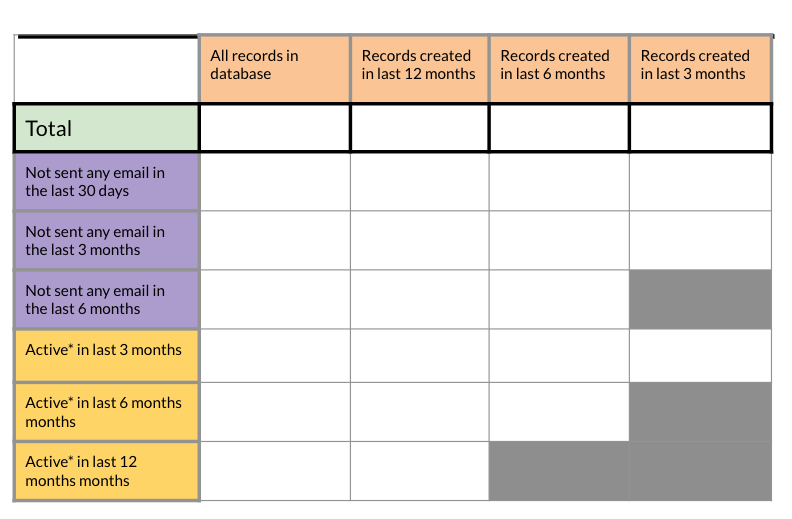Email Marketing
How to Conduct an Email Marketing Audit

Email Marketing

Whether it’s a new year, a new fiscal year, or you’re starting a new job, doing an email marketing audit of your existing campaigns and database is a smart way to begin. These audit numbers can help you establish a baseline for improvement, as well as bragging rights.
You can begin an audit in many different ways. In this article, I will show you how I would conduct an email marketing audit, but of course, you’re welcome to pick and choose to make this work better for you.
For this audit, I will be focusing on the following:
This is completely optional, but at larger organizations, it’s often a good idea to compile a list of all of your sending platforms. Every year, take note of any changes in this list. For example, at some companies, emails are deployed from the marketing automation platform as well as tools like Outreach, Salesforce, and Gainsight. I keep a simple list of these sending systems, as well as system owners and sending domains.
I tend to focus on my marketing automation database for this exercise, but if your company uses a data lake to pipe data into your Marketing Automation Platform (MAP) or Email Service Provider (ESP), you can look there too. I begin the email marketing audit with a spreadsheet or Google sheet with all my data so I can both share it and save it for comparisons later.
It’s a good idea to take a yearly (or even quarterly) audit of these seven factors:
Here’s an example of how I set up this part of an email marketing audit spreadsheet:

If you only use a small number of lists (or segments), use this time to think through whether creating additional segments is needed. Or, if you think it’s a worthwhile idea to test, you can start planning for those tests. If you employ dozens (or even hundreds) of segments in your email marketing, now is a good time to ask these questions:
If you’re an email marketing team of one, you might already track which campaigns you sent for the year and how they performed.
However, if you’re part of a larger company where multiple teams are sending emails out of the same MAP, it’s a good idea to take note of what business-as-usual (BAU) campaigns were sent, who they were sent to, and how they performed. If the campaigns were part of an A/B test, I keep track of those results, as well as the winner (if there was one).
In your spreadsheet, make a column for:
This is basically just an email marketing campaign report for the whole year. Please add or remove columns to fit the needs of your email marketing audit! With a whole year’s worth of campaign data, you can see what efforts have been more successful than others.
Do the same for automated email campaigns. Note which campaigns are running, and how they performed. You may not need to include a deployment date, but you could pull the rest of the metrics.
So you’ve taken a look at your email campaigns and your database, but you don’t want to forget about your email template(s)! During this annual email marketing audit, make a note of your existing templates.
Ask your stakeholders and yourself:
A new year is an opportunity to audit your existing email production process and see where you can make improvements. Need ideas? Check out this article titled How to Improve Your Email Creation Process, by yours truly.
Now that you’ve compiled all this great information together in your awesome spreadsheet, it’s time to share the email marketing audit with your team. Also, if you want to go the extra mile, create a presentation or slide deck add bits of your data and learnings to it. Share it with your manager and team to show them what email marketing has been up to in the last year! Also, use this data to create your email marketing strategy for 2021. What campaigns can be repeated with a few tweaks? What automated campaigns are performing best but could potentially do better?

After auditing last year’s email campaigns, you can use that information to inform your 2021 email marketing strategy.
If the changes that came with 2020 left you scratching your head, check out the special report, Email Marketing and the Next Normal, featuring insights from Senior Email Marketing Manager, Betsy Grondy.